As summarised earlier, the Australian Bureau of Statistics (ABS) today released its labour force report for December, which registered a 13,500 increase in total employment but also an increase in the headline unemployment rate to 5.8%.
In trend terms, the unemployment rate rose marginally to 5.71%:
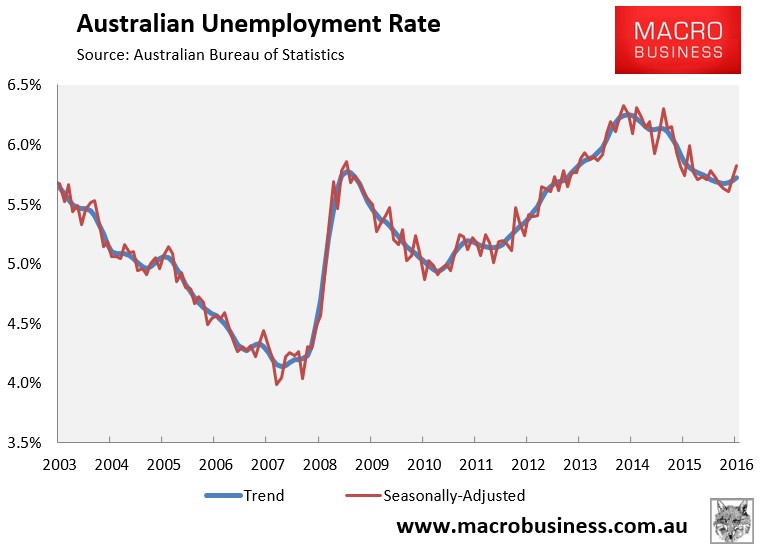
Again, total employment rose by a seasonally adjusted 13,500 to 11,985,900. Full-time jobs rose by 9,300, whereas part-time employment rose by 4,200:
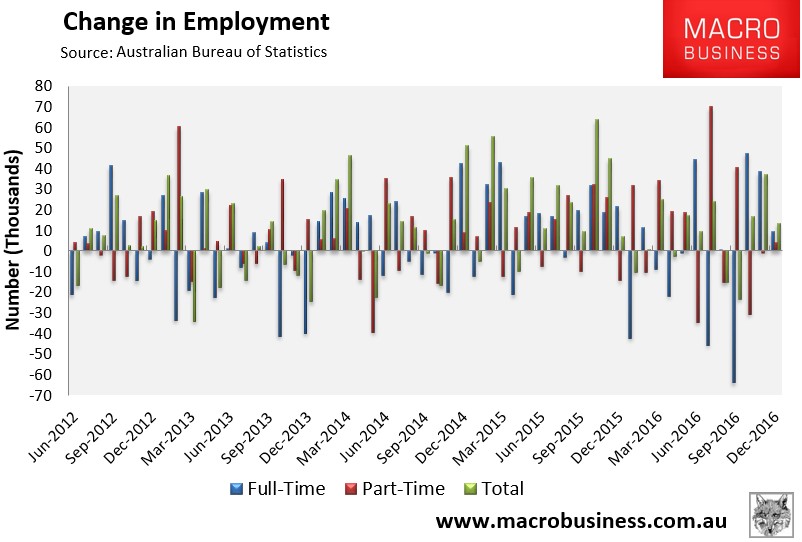
The participation rate rose 0.1% to 64.7% over the month:
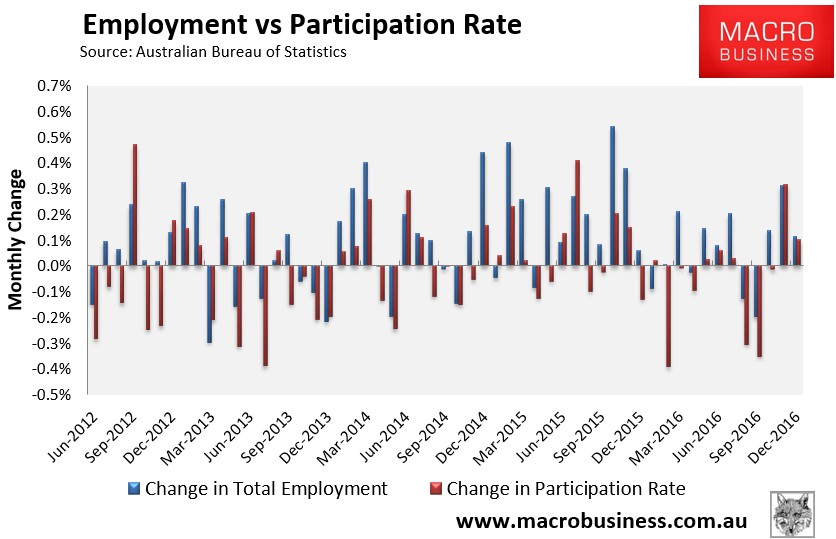
The trend in total employment remains weak after October and November 2015’s numberwang surge:
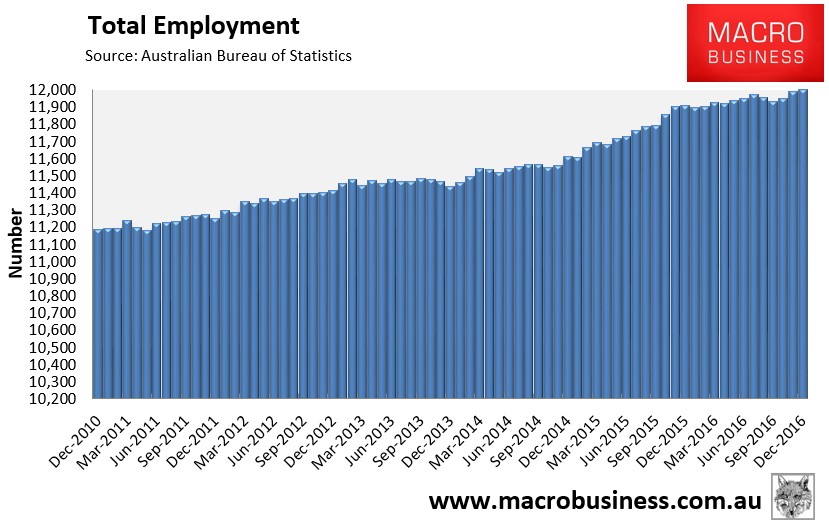
Trend annual employment growth continues to weaken (+0.7%) and is being driven exclusively by part-time employment, with full-time jobs still contracting, albeit with an improving trend:
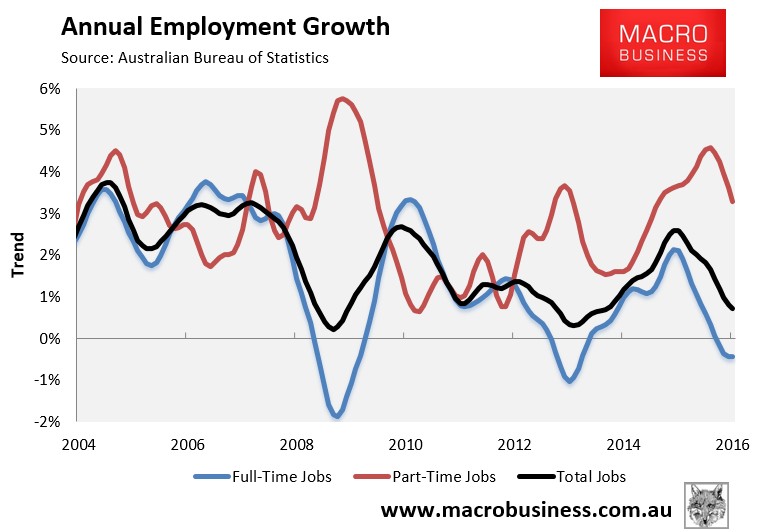
As shown above, trend full-time jobs growth is negative at -0.4% versus +3.3% growth for part-time jobs.
The proportion of the population in full-time work remains at an equal all-time low:
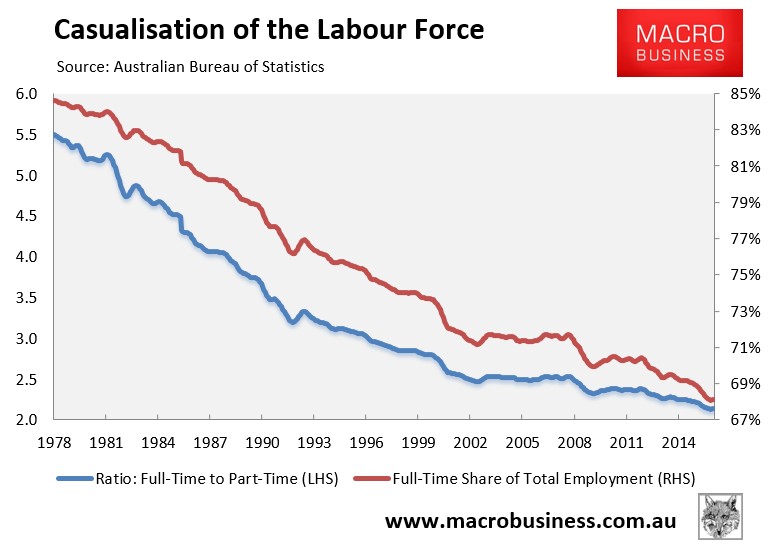
In December, the Melbourne housing/population ponzi economy drove all of the jobs growth over the past year, accounting for 152% of national jobs growth in seasonally adjusted terms, with the rest of Australia going backwards:
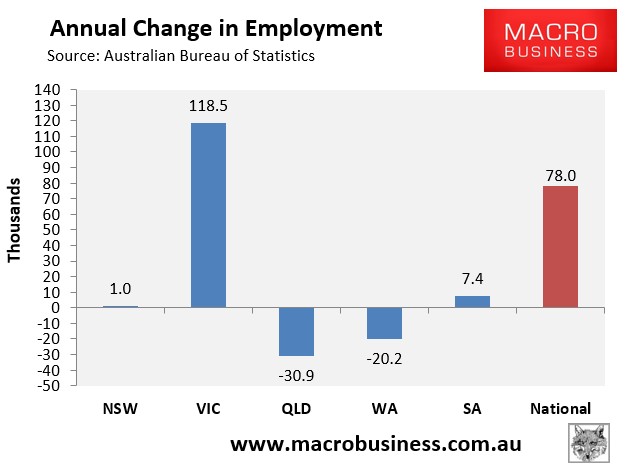
The state seasonally-adjusted figures are notoriously volatile and subject to a big margin of error. As such, the below chart tracks state jobs growth in trend terms. Here, the housing bubble epicentres of Melbourne and to a lesser extent Sydney drove all of the nation’s jobs growth over the past year, whereas the rest of Australia collectively shed jobs:
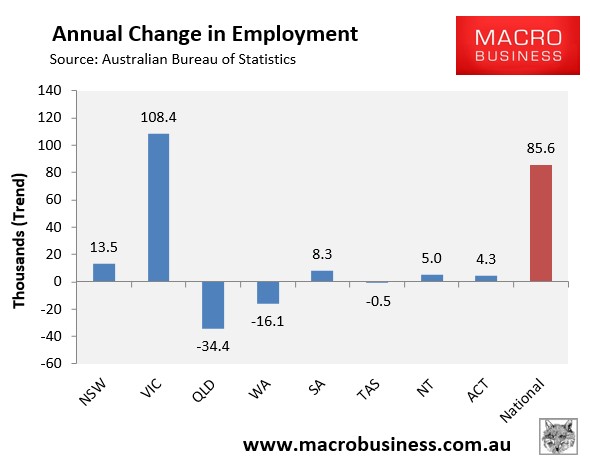
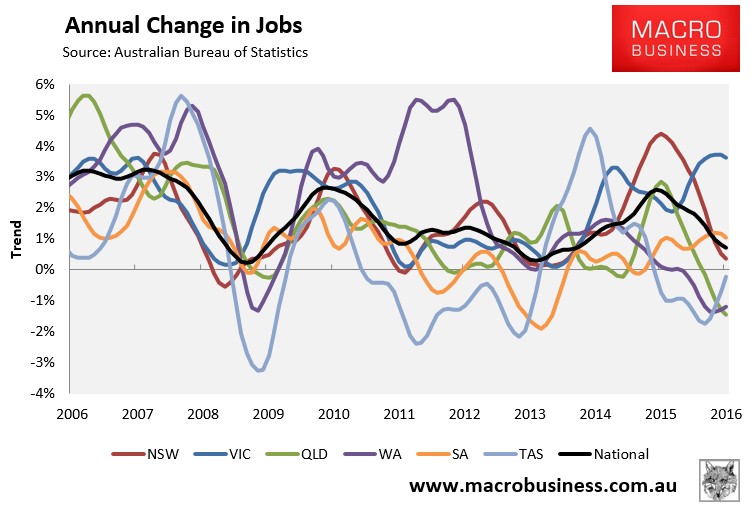
In a continued reversal of fortunes from the mining boom days, Western Australia now has the second highest seasonally adjusted unemployment, whereas the bubble epicentres of New South Wales and Victoria have the lowest:
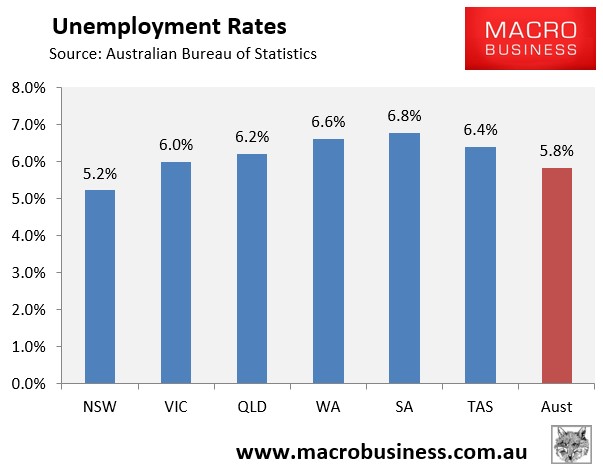
The below chart shows the ABS’ trend unemployment rates, which again shows the bubble epicentre of New South Wales with by far the lowest unemployment, South Australia, Western Australia and Tasmania with the highest, and Victoria and Queensland with above-average unemployment:
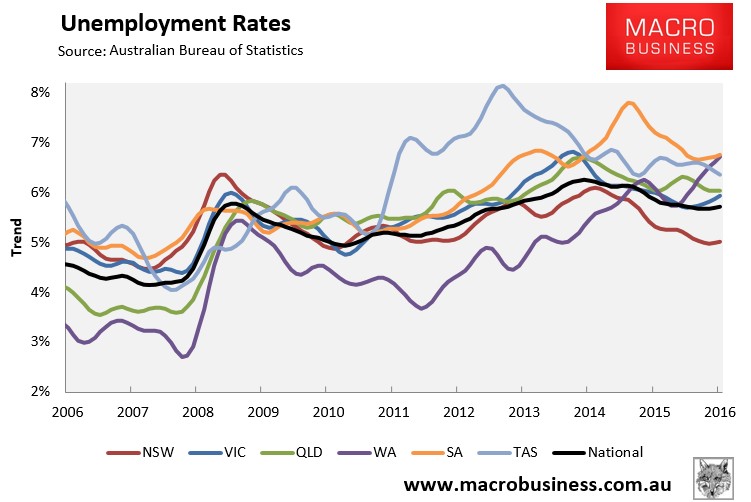
The aggregate number of hours worked rose in seasonally adjusted terms, up 6.9 million hours or 0.42% in December. However, hours worked have risen by just 0.7% over the past year:
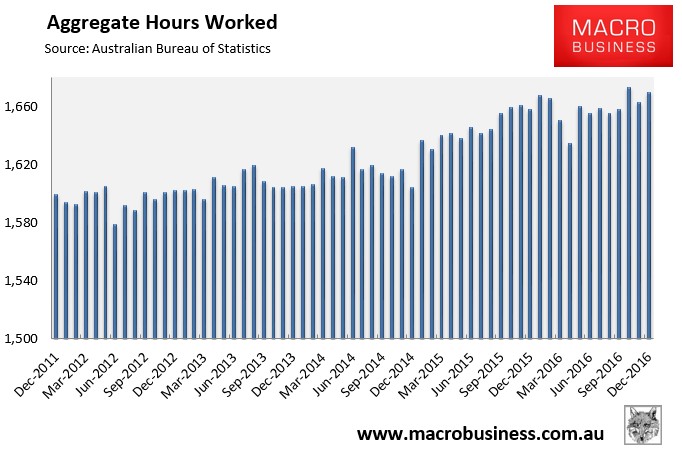
The below chart, which tracks the annual change in hours worked on a trend basis, paints a sobering picture. It shows that Victoria (Melbourne) has driven the lion’s share of growth in hours worked, with most other jurisdictions showing minimal or negative growth. Nationally, trend growth in hours worked was just 0.4% in the year to December, although it at least appears to have found a bottom:
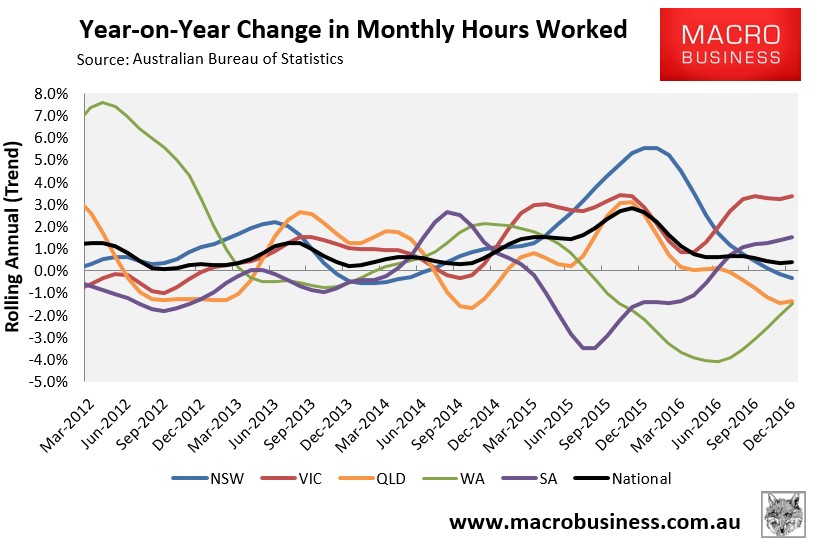
Average hours worked is also at an equal all-time low:
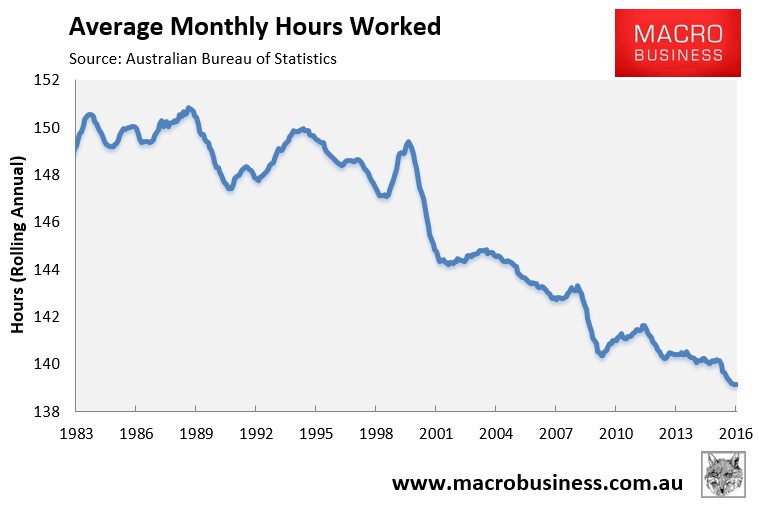
Workforce participation has fallen sharply recently, but at least it too looks to have found a bottom:
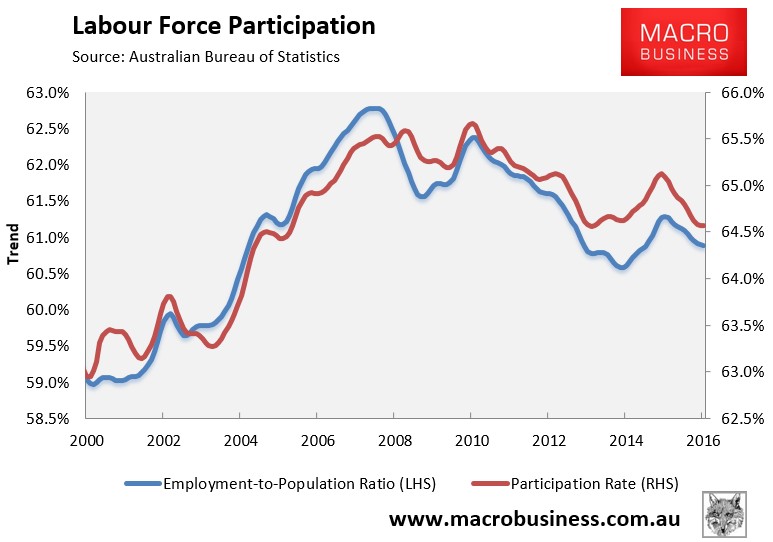
Finally, to round things out, the next chart summarises the annual change in the key employment aggregates on a seasonally-adjusted basis, which shows a mostly negative picture:
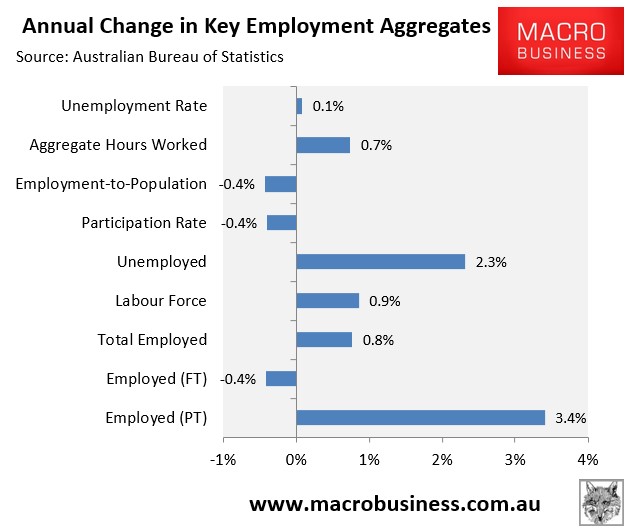
The labour market remains precarious.
Virtually all of the trend jobs growth is coming from the Melbourne housing/population ponzi. Trend growth in full-time jobs remains negative. And trend growth in hours worked remains weak, as does labour force participation.
When the dwelling construction boom eventually rolls over, along with the closure of the car industry, the employment picture will obviously weaken further. What can realistically rise up to fill the void?

